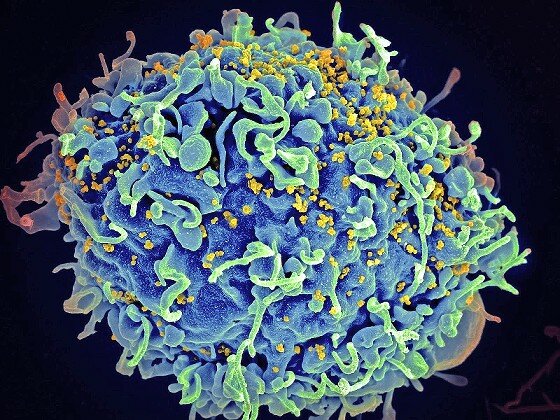Will Rx’s follow as Touro team tracks cell-invasion?
A study led by a team at Touro University Nevada has identified a new pathway that human immunodeficiency virus (HIV) uses to enter the nucleus of a healthy cell, where it can then replicate and go on to invade other cells.
The researchers, led by Aurelio Lorico, MD PhD, interim Chief Research Officer at Touro University Nevada College of Osteopathic Medicine, also identified three proteins that are needed for the virus to carry out the invasion and have in turn synthesized molecules (potential drugs) that can target one of the proteins, potentially leading to new treatments for AIDS. It was published last month in the journal Nature Communications.
Touro University Nevada is the state’s largest school of medicine and largest school of physician assistant studies, fully accredited, and a private, non-profit, Jewish-sponsored institution.
HIV infection requires the virus to enter a cell and gain access to the well-guarded nucleus in order for the viral components to be integrated into the healthy cell’s DNA, Lorico explained; but how the viruses get past the protective membrane is not well understood and is the subject of much debate.
“We have revealed a protein pathway that appears to have a direct impact on diseases, which opens up a new area for potential drug development,” he said.
This pathway for nuclear access was first discovered in the team’s research on cancer metastasis and is likely involved in other diseases as well.
“This is an entirely new pathway and we have developed molecules (drugs) that block it,” said Lorico. “Although our research is at a pre-clinical stage, it is likely that the new drugs synthesized may have therapeutic activity in AIDS, other viral diseases, and possibly metastatic cancer and other diseases where nuclear transport is involved.”
The team is currently looking at the pathway’s role in Alzheimer’s disease and metastasis of many types of cancer.
“Because the pathway we found may apply to many types of disease, there is a tremendous amount of work that needs to be done to understand the full benefits of this research,” said Dr. Denis Corbeil, co-leading author of the study and research group leader at the Biotechnology Center (BIOTEC) of TUD Dresden University of Technology in Germany.
“The ground-breaking research of Dr. Lorico and his team is a testimony to the importance that Touro University gives to its mission of service to humanity,” said Dr. Alan Kadish, Touro University President.
The potential therapeutic applications of this new pathway to improve patient care are immense and may help us better navigate the next pandemic,”
The study was the result of a collaboration of researchers from Touro University Nevada College of Osteopathic Medicine, Touro College of Osteopathic Medicine in New York, researchers from the Biotechnology Center (BIOTEC) of TUD Dresden University of Technology in Germany, and researchers from Italy.
Opened in 2004, Touro University Nevada was established to help address critical needs in health care and education and as a resource for community service throughout Nevada. Its mission is to provide quality education programs in the fields of health care and education in concert with the Judaic commitment to social justice, intellectual pursuit, and service to humanity.
Touro University Nevada is home to more than 1,500 students in a wide variety of degree programs including osteopathic medicine, physician assistant studies, education, nursing, occupational therapy, physical therapy, and medical health sciences. The University’s Henderson campus houses the Engelstad Research Complex for Biomedical and Human Performance Research that is committed to contributing to intellectual progress through insightful scientific research.
Reported by Touro University.






